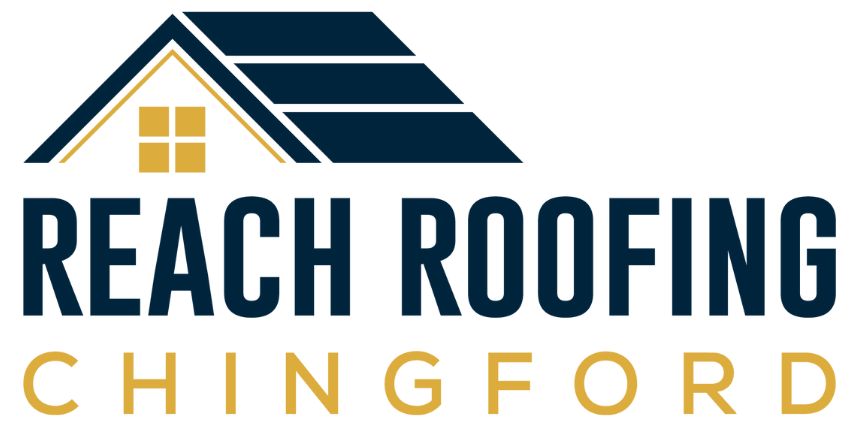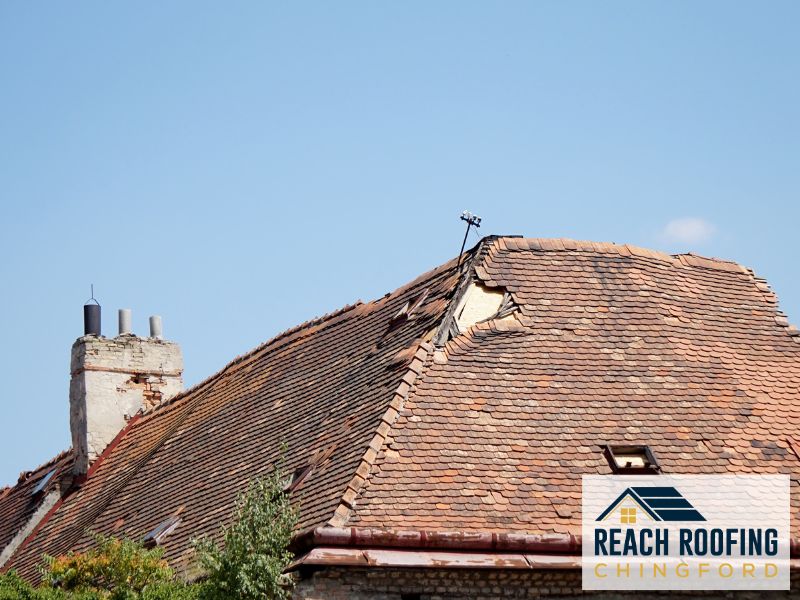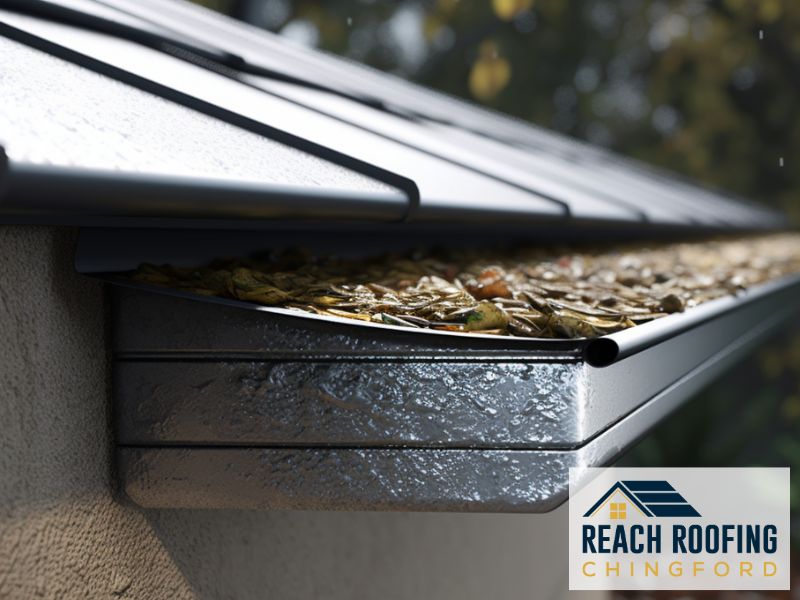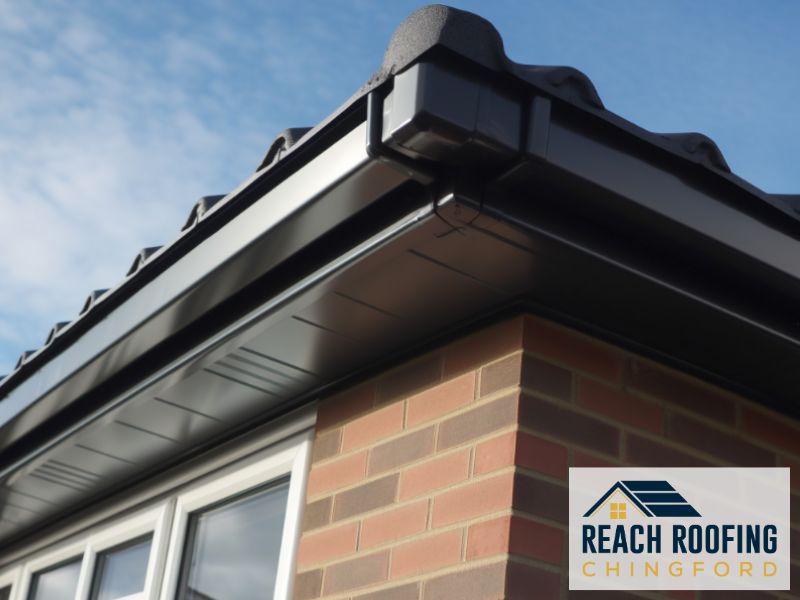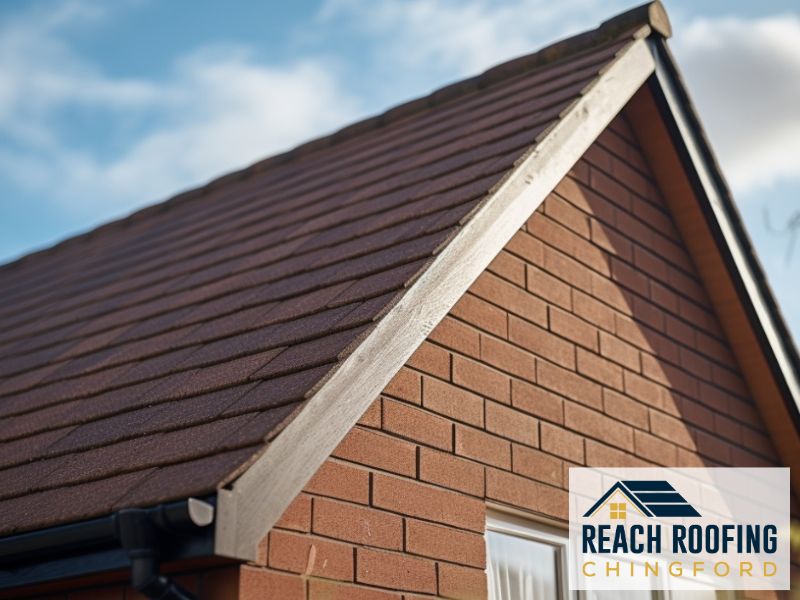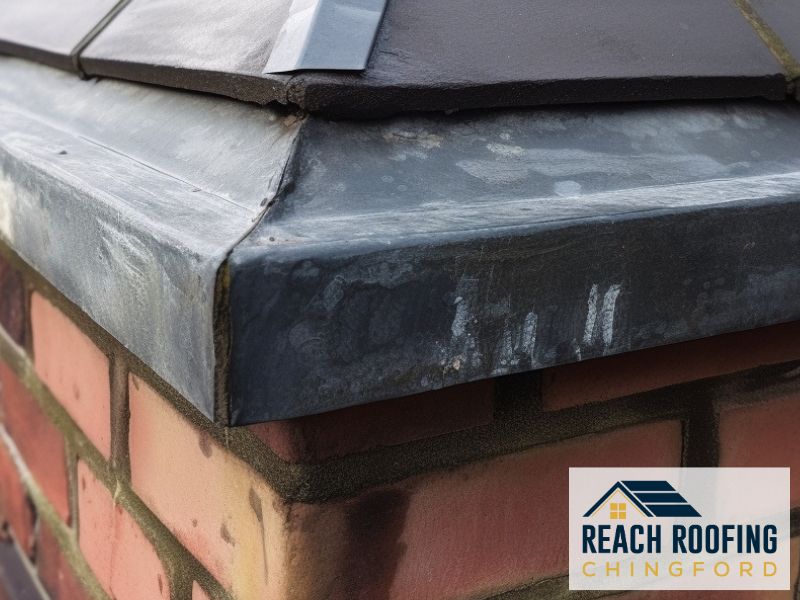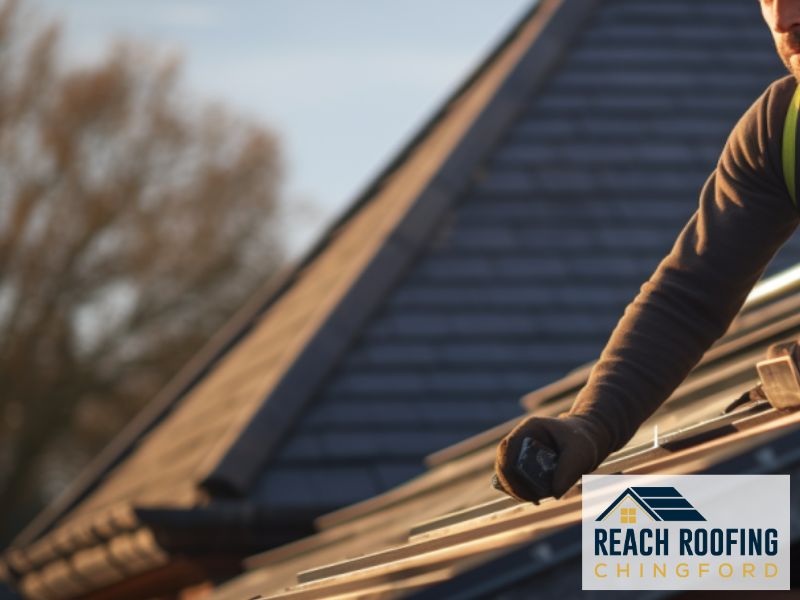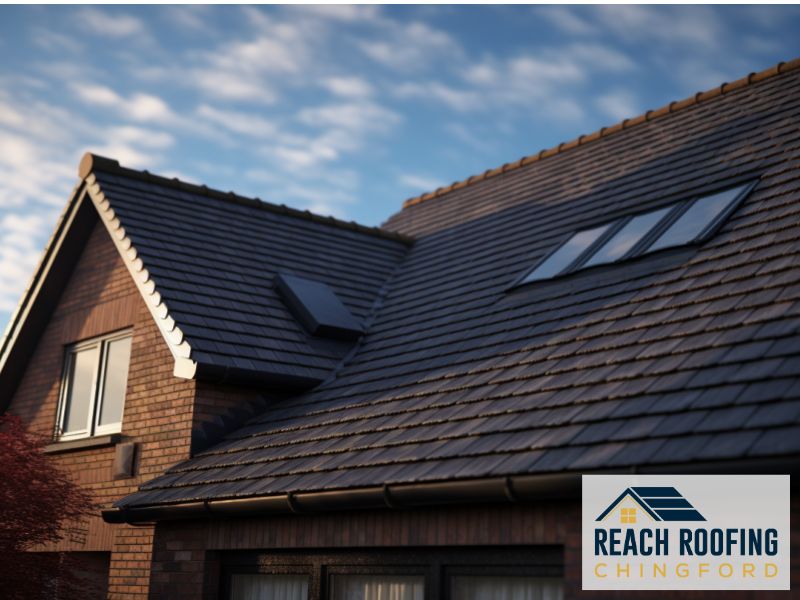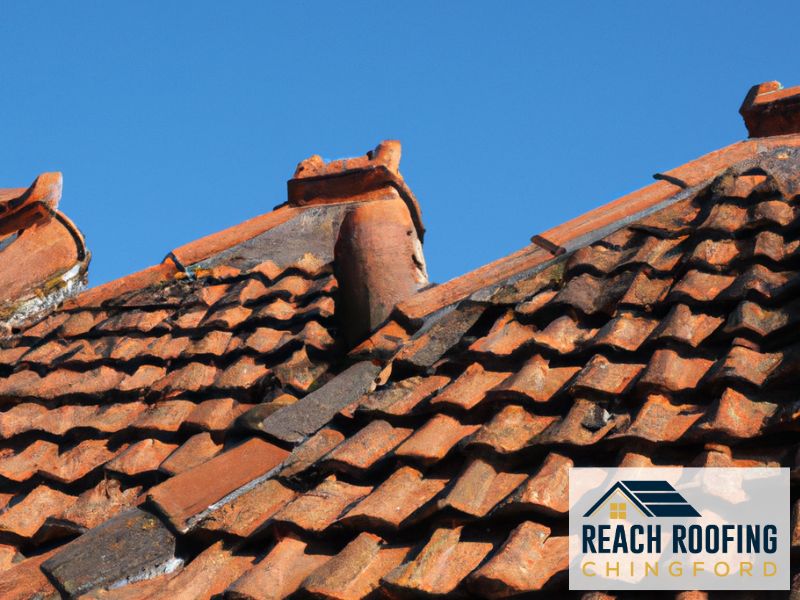- Brief overview of the importance of roof replacement
- Common signs indicating the need for roof replacement
- Importance of timely roof maintenance
Assessing the Need for Roof Replacement
Signs of Roof Damage
- Leaks and water stains
- Missing or damaged shingles
- Sagging or uneven roof
- Mold and mildew growth
- Age of the existing roof
Hiring a Professional Inspection
- Importance of professional assessment
- Choosing a reputable roofing contractor
- Requesting cost estimates and timelines
Types of Roofing Materials
Asphalt Shingles
- Most common roofing material in the UK
- Durability and lifespan
- Color and style options
Asphalt shingles are the most widely used roofing material for sloped roofs in the UK due to their affordability, durability, and variety of styles. The average lifespan of asphalt shingles is 20-25 years. Laminated shingles with multiple layers tend to last longer than cheaper 3-tab shingles. Colors range from black, brown, grey to more vibrant hues of green, red or blue. Architectural styles like dimensional or layered shingles provide greater dimension.
Slate Roofing
- Traditional and elegant option
- Longevity and high cost
- Maintenance considerations
Slate is a premium roofing material seen on older, prestigious homes in the UK. Slate roofs are extremely durable, often lasting over 100 years. They require specialized skills to install, contributing to a higher cost. Routine maintenance is needed to replace cracked or missing slate tiles over time. Slate comes in shades of grey, purple, green and red. It provides a classic, distinguished look but can be expensive.
Metal Roofing
- Energy-efficient and durable
- Lightweight and recyclable
- Cost considerations
Metal roofs like aluminum, steel and copper have grown in popularity in recent years. Metal is fire and insect resistant, lightweight, and reflects heat efficiently. It can also be an eco-friendly choice as metal is recyclable. Installation costs tend to be higher than asphalt shingles but lifespan can reach 50-70 years. Maintenance needs are low, but metal roofs can be noisy during heavy rain or hailstorms.
Flat Roofing
- Suitable for certain architectural styles
- Waterproofing considerations
- Maintenance challenges
Flat roofs have a slope less than 10 degrees and feature fewer layers than sloped roofs. They perform well on modern homes, apartments and commercial buildings. Good waterproofing using materials like PVC, EPDM rubber, modified bitumen and liquid coatings help prevent leaks. Regular inspection and repairs are essential as flat roofs are prone to pooling water, weather damage requiring diligent maintenance.
Understanding the Roof Replacement Process
Preparing for Replacement
- Notifying neighbors and obtaining necessary permits
- Clearing the workspace and protecting surrounding areas
- Temporary relocation considerations
Replacing a roof is a major project requiring proper planning and preparation. Notify neighbors of expected noise, debris and duration of the roof replacement. Obtain local permits for construction and waste disposal. Remove overhanging tree branches and secure loose outdoor items. Cover landscaping, vehicles or other assets with tarps for protection. Consider temporarily moving high-value furnishings to prevent interior water damage. Turn off HVAC systems while the roof is open.
Removal of Old Roofing Materials
- Importance of proper disposal
- Environmental considerations
- Potential structural issues
Tearing off old roofing materials makes up a significant portion of the roof replacement process. Proper disposal of roof waste like shingles, underlayment and flashings is crucial to minimize environmental impact. Inspect the newly exposed roof deck and structural components like rafters, trusses and sheathing for water damage or deterioration. Address any compromised structural elements prior to installing the new roof.
Installation of New Roof
- Steps involved in the installation process
- Quality control measures
- Ensuring proper ventilation
The key steps in the roof installation process include adding underlayment, drip edge, flashings and finally the top layer of shingles, tile or metal roofing. Achieving the correct slope, overlap and waterproof seals between pieces is critical. A certified roofer will ensure the roof meets building codes and manufacturer specifications. Proper attic ventilation improves air circulation, reducing heat and moisture that shorten roof lifespan.
Post-Installation Inspection
- Thorough inspection of the new roof
- Addressing any remaining concerns
- Obtaining warranty information
A careful inspection after the new roof installation identifies any lingering flaws like gaps, punctuation holes, loose materials or lacking flashings needing correction. Review the manufacturer’s warranty coverage and timeline for the roofing products with your contractor. Obtain written warranty documentation for all materials and keep records of the project completion date. Schedule semi-annual professional inspections of the roof in the first 2 years.
Frequently Asked Questions
How long does a typical roof replacement take?
Factors influencing the timeline
- Roof shape, pitch and complexity
- Roofing material chosen
- Crew size and weather delays
Estimated duration for different types of roofs
- Small sloped shingle roof: 2-5 days
- Large complex roof: 1-2 weeks
- Tear-off, repairs and install
The roof replacement duration depends heavily on the roof size, accessibility, needed repairs and weather factors. Expect at least 2-5 full working days for a straightforward sloped shingle roof replacement. Larger or multi-level roofs with 4 or more crew members may finish in under a week. Extensive tear-off, repairs and complex flashing could add days.
What are the costs associated with roof replacement?
Factors affecting the cost
- Roof size and pitch
- Type of roofing material
- Accessibility and preparation work
- Structural repairs needed
- Removal and disposal fees
Budgeting tips
- Get multiple quotes for cost comparison
- Plan on $100-500 per square meter installed
- Factor in other project costs – permits, scaffolding rental, dump fees
Roof replacement costs range widely, averaging £250-500 per square meter installed depending on the roofing material quality and lifespan. Get quotes from 2-3 reputable local roofers using the same specifications. Budget for auxiliary costs like permits, equipment rentals and debris removal too.
Is it possible to install solar panels during roof replacement?
Integrating solar technology
- Optimal time for solar mounting and wiring
- Unobstructed access to roof structure
Benefits of simultaneous installation
- Single mobilization of roofing crew
- Shared equipment/scaffolding expenses
- Prevent repeat disruptions
Installing solar power systems concurrently with getting a new roof allows major structural components to be unblocked, facilitating electrical integration. Combining the projects into a single endeavor is more efficient and prevents unwanted repeat construction. Consult solar providers early when planning the roof replacement.
How to maintain the new roof for longevity?
Regular inspections and maintenance tasks
- Semi-annual inspections
- Clear debris from gutters
- Trim overhanging branches
- Reseal vents/flashings if needed
Seasonal considerations
- Rake gutters and drains before winter
- Touch up sealants after winter
- Inspect after major storms
Professional inspections
- Thorough assessment every 2-3 years
- Identify potential problems early
Proactively maintaining the roof maximizes its lifespan. Remove built up leaves or debris that can impede drainage. Reapply sealant if cracking appears around vents. Have the roof professionally inspected every few years to catch minor damage before major issues arise. Take preventative measures before and after seasons of heavy wind, rain, snow or storms.
Are there any government incentives for roof replacement?
Available subsidies or grants
- Reduced VAT on certain materials
- Renewable Heat Incentive (RHI)
- Regional/city conservation rebates
Energy-efficient roofing options
- Cool roofs that reflect solar radiation
- Green roofs with vegetation layer
- Integrating solar panels
The UK government offers some programs encouraging energy efficiency investments like roof upgrades through subsidies, tax relief or reimbursements. Non-for-profit groups also provide grants benefitting low-income households or the adoption of sustainable building techniques using eco-materials. Check for programs active in your area.
Understanding the scope and cost of roof replacement is crucial, a process where Roofing Company Chingford can provide transparent guidance and high-quality service.
Thanks for reading our post, feel free to check out our other services:
- Chimney Repairs
- Commercial Roofing
- Flat Roofing
- Guttering, Soffits and Fascias
- Lead Roofing & Leadwork
- Pitched Roofing
- Roof Repairs
- Roof Replacement & New Roofs
- Skylights & Roof Windows
- Slate Roofing
